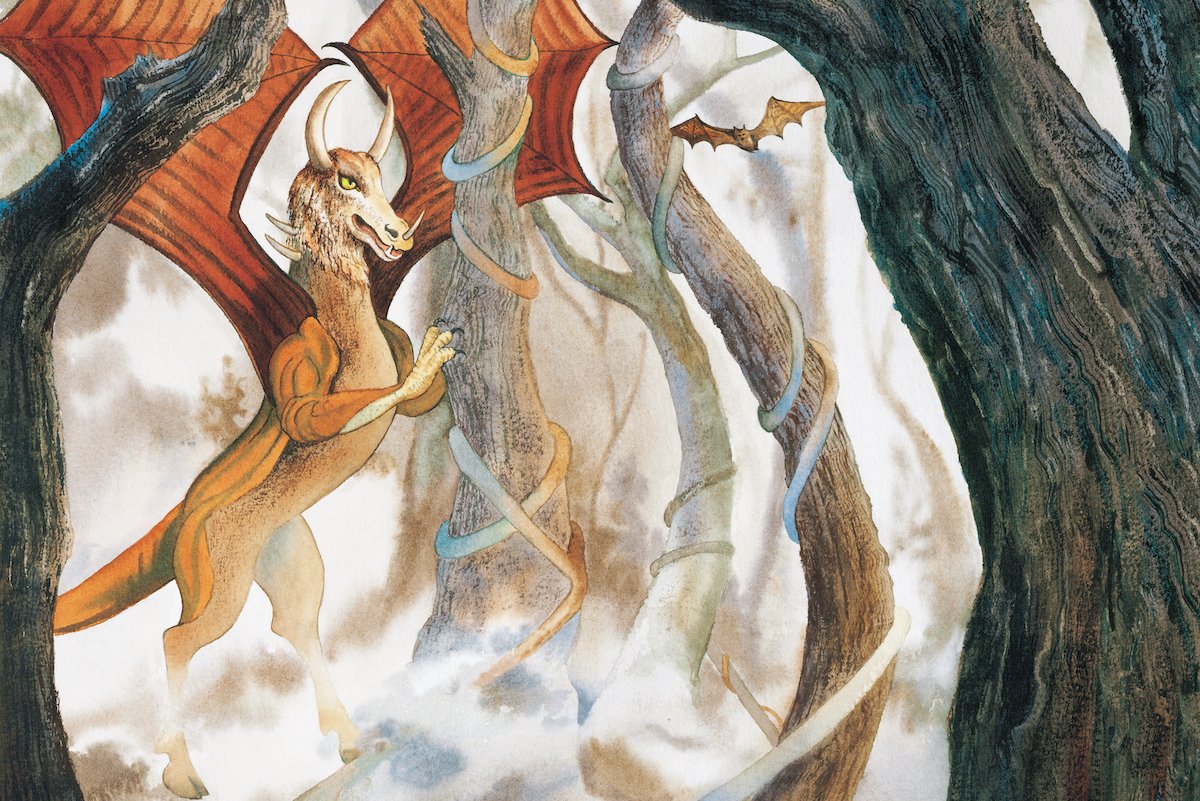A Visitor’s Guide to the Jersey Devil
The legend of the Jersey Devil has survived for centuries because, as experts say, we just can’t help ourselves but believe in monsters. Today, the lore exists for many reasons such as state-funded folklore, movies, mascots, and more, making New Jersey a must-stop destination for monster hunting. So go grab a hoagie because we’re going to tell you everything you need to know about the Jersey Devil.
Where was the Jersey Devil born?
In what may sound like a cliche today, the legend of the Jersey Devil began on a dark and stormy night in 1735. In a small town called Leeds Point, Mother Leeds gave birth to her thirteenth child, and from there, the story goes one of two ways.
Some say the newborn already looked like the devil, arriving into the world with wings and a tail. Others say the baby looked completely normal and developed devil-like characteristics later on. Either way, everyone seems to agree on where the the legend began.
What does the Jersey Devil look like?
Of course, nobody knows what the Jersey Devil looks like, but most who claimed to have seen it said it had human and animal traits. They say it stands on two legs, often with a “forked” tail, and with features such as horns, a horse head, and/or wings. People also talk about the devil’s chilling scream.

Where does the Jersey Devil live?
There have been sightings of the Jersey Devil wandering the Pineland area of the state — also called the Pine Barrens, a 1.1 million acre forest in central New Jersey — dating back to the early 18th century.
Many believe it may torment those who dare to enter the pines, occasionally kills a domestic animal, and sometimes even raises terror in the surrounding areas. Although there are no photographs of it, there are a number of sightings that some believe to be evidence of the Leeds Devil.
One of the most famous occurrences happened during a chilly January week in 1909. From Jan. 16 to 23, strange footprints were found in the snow and Mills in the Pine Barrens were forced to close, as workers didn’t want to travel through the woods to get to work. The creature was even said to travel into Camden and Philadelphia.
Another notable sighting was by Joseph Bonaparte, brother of Napoleon Bonaparte and former King of Spain. According to legend, during Bonaparte’s exile to the United States, he was hunting alone in the woods when he came across tracks that were described to be similar to a donkey’s that abruptly stopped. He then heard a hissing sound behind him and when we turned, he claimed he was face-to-face with the winged creature briefly before it flew away.
In 2015, New Jersey resident David Black claimed to have photographed the infamous creature, and another resident said to have gotten video evidence of the Jersey Devil flying away, on the same night
New Jersey love? Or fear?
Since 1938, the Jersey Devil has been recognized as the country’s only state demon and since then, New Jersians have made the creature a big part of their state’s quirky culture. Since moving to New Jersey in 1982, the New Jersey Devils ice hockey team has had the same name as the Leeds Devil and has held it since.
In 2008, Bruce Springsteen released “A Night with the Jersey Devil,” for Halloween on his website, along with a handwritten note, and was supposed to be on his 2009 album Working on a Dream, but was eventually cut from the tracklist.
Since 2021, Six Flags Great Adventure has been home to the Jersey Devil Coaster. The single rail coaster features a 130-foot drop reaching a maximum speed of 58 miles per hour and is- rightfully- located in the “Pine Barrens” section of the park.
In 2022, Director Seth Breedlove released his horror documentary, Bloodlines: The Jersey Devil Curse is about finding the true identity of what has been tormenting the Pine Barrens these last few centuries. Broken into three parts, the film tells us stories of sightings from 1735, 1909, and 1989.
What is the Jersey Devil, really?
After numerous sightings, locals and scientists were looking for answers. Smithsonian Institute experts and professors located in Philadelphia were beginning to theorize that the Jersey Devil was actually a dinosaur that had been surviving in local caves since the prehistoric era.
Scientists in New York thought it might be a carnivorous marsupial. However, some historians have discussed the possibility that the Jersey Devil could be an animal that was brought over through world trade, as the practice was common in the colonial era. If that is the case, it is thought that the Jersey Devil is actually a Hammerhead Bat, native to Central Africa.
Though the physical evidence is limited at best, belief- and fear- of the Jersey Devil is real and felt in the state.
Do you think the Jersey Devil is real? Comment below.
Source: https://outdoors.com/a-visitors-guide-to-the-jersey-devil/





